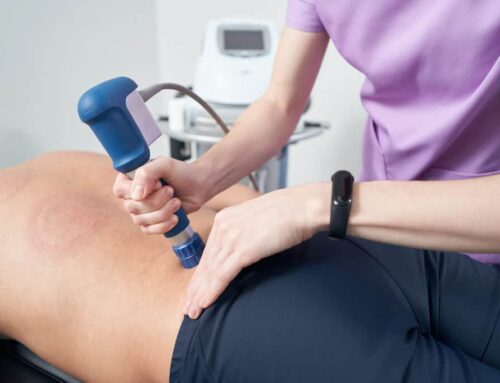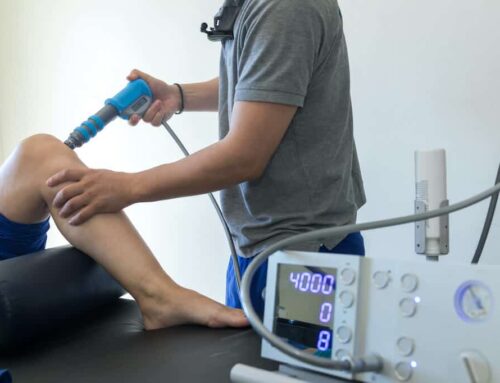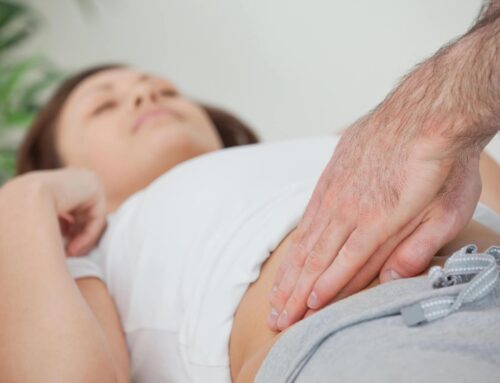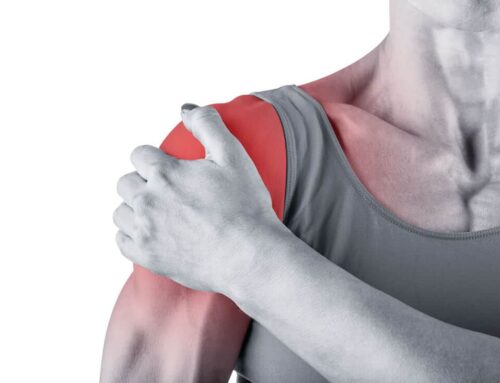
The most common places to experience bursitis are the hips, shoulder, knee, and elbow. Most treatments for bursitis focus on reducing inflammation, but very few focus on figuring out why that bursae became inflamed in the first place.
When you consider asking why the bursae became inflamed to begin with, you find long lasting solutions for bursitis that causes hip pain, knee pain, shoulder pain, and elbow pain.
Symptoms of Bursitis
When you have bursitis, common symptoms include:
- Feeling achy or stiff
- Joint pain when you move
- Swollen, red joints
- Sharp, shooting pain when you exercise or push against something.
- Pain at night when you have pressure over the painful joint (such as laying on your hip, giving you hip pain at night.)
Causes of Bursitis at Each Location
Bursitis is caused by repetitive irritation of the bursa. This can be caused by:
-
- Repetitive motions such as throwing a ball, or squatting
- Repetitive pressure on the joints such as kneeling or leaning on your elbows
- Trauma to the area, such as falling on it.
- Other inflammatory disorders
Muscular imbalances causing overuse of larger muscles
Pay special attention to the very last one. This is the most common, and least understood causes of bursitis.
Muscular imbalances are the most common cause of bursitis. Having these imbalances results in increased use of the large muscles in your body, which then put more and more pressure on your bursae.
With your bursae under more pressure, you begin to have inflammation in the area. This inflammation builds up over time until you do something repetitive, tipping the scale into full blown bursitis.
Bursitis of the Hip
Bursitis of the hip is caused by an overuse of your Tensor Fascia Latta muscle (TFL). This muscle gets overused when there is weakness in the small muscles of your hip.
These muscles get weak because they are rarely targeted in our day to day life, or most exercise programs. Once this imbalance occurs, the TFL starts working harder, causing compression on the bursa. Over time the inflammation builds up until the bursa in the hip becomes inflamed. This results in hip bursitis that can make it painful for you to sleep on your side at night.
Bursitis of the Knee
Bursitis of the knee is caused by an overuse of the quads. The quads get overused for some of the same reasons as the TFL. We often overuse our quads just by habit, but this becomes even worse when we have weak hips or tight calves.
On top of this, if you’re sitting at the desk all day, your knees are bent, which then puts even more pressure on the bursae at the knee.
Bursitis of the Elbow
Bursitis of the elbow is caused by an overuse of the triceps. The triceps can get overused if there is a weakness in shoulder stability, particularly of your rotator cuff muscles. When you then add that we typically lean on our elbows throughout the day, this pressure can mount on the bursa.
This can be particularly frustrating at night. When you sleep with your arms bent the inflammation slowly builds up until it’s painful, waking you up. This leaves many people scratching their heads, trying to figure out how to sleep with their arms straight at their sides.
Bursitis of the Shoulder
This is caused by an overactive deltoid muscle. The deltoid becomes overactive when you have rotator cuff weakness, or injury. It can also become overactive if you have weakness in other muscles that attach to your shoulder blade.
Again, this one can be particularly frustrating at night if you’re a fan of sleeping on your side.
Will Bursitis Go Away?
The million dollar question!
The short answer is…yes. But for how long?
If you do what is typically recommended, chances are it will come back. The typical recommendations are rest, anti-inflammatory medication, and maybe some injections to calm the bursa down.
If you were paying attention to the actual CAUSE of the bursitis though, you’ll likely see that this will result in short term results. The bursitis is simply the EFFECT, and the SYMPTOM of poor muscular strength.
So if poor muscular strength is the ROOT CAUSE, then to get real, long lasting results you have to strengthen the right muscles. Sounds pretty simple right?
It would be if everyone’s root cause was exactly the same. But since we all have different daily habits and exercise preferences, the cause can vary from person to person. The exercises given to one person may actually make another person worse.
What’s worth noting is that not all exercises are created equal. You may need the help of an expert in identifying exactly which muscles are not working well, and which ones are doing too much.
In this way you can work towards creating the balance that will reduce pressure on the bursa, and restore your joints to moving pain-free.
If you are ready for help and would like to speak with an expert about your bursitis, simply click the button below and fill out a short form to arrange a call with one of our experts.





